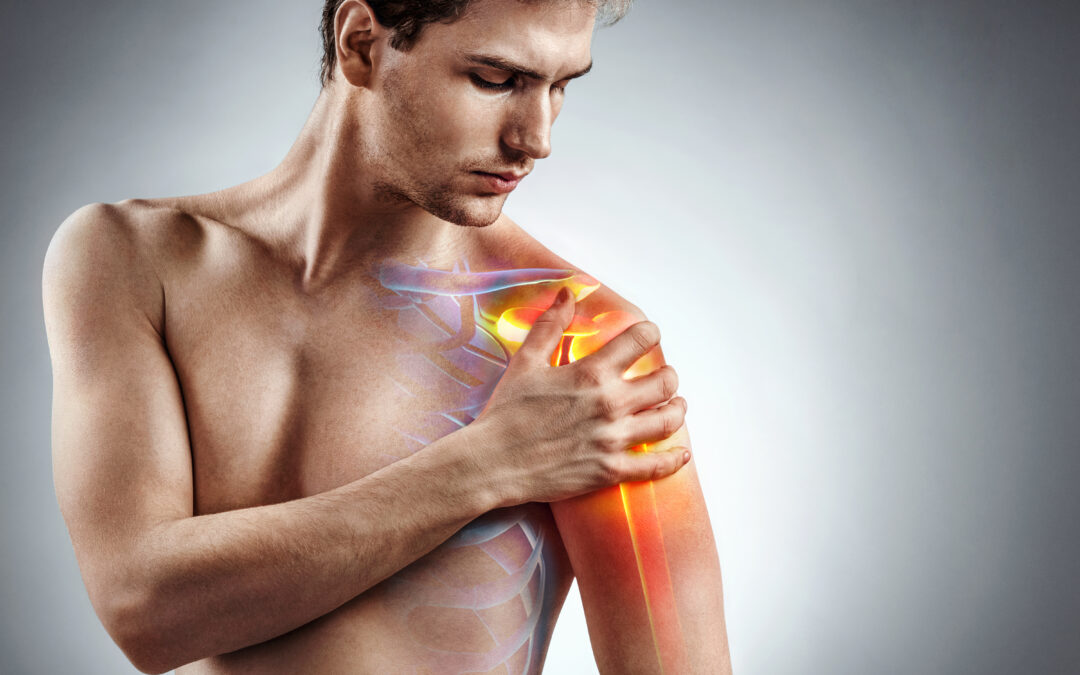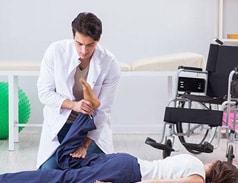People who are active, especially athletes who often push their bodies to the limit, are at a higher risk of sustaining injuries. Thanks to the rigorous training, intense competitions, and physical demands of many sports, injuries are sometimes unavoidable. A shoulder injury is a common setback for many athletes, due to its use in a wide range of movements, and when it does happen performance is impeded. In this blog, we will discuss shoulder injury recovery, what common forms of exercise can hurt your shoulder and what you can do for shoulder rehab.
To minimise your downtime from sports and exercise, it’s crucial to seek out the right approach to shoulder injury recovery. With proper treatment, which might include rest, physiotherapy, exercises, and sometimes even surgery, recovery can be faster than expected.
Understanding Shoulder Injuries
The Anatomy of the Shoulder
The shoulder, one of the most mobile joints in the human body, is a marvel of biomechanical engineering. This complexity, while allowing a vast array of movements, also makes it susceptible to various injuries.
Components of the Shoulder:
- Bones: The shoulder is primarily made up of three bones: the scapula (shoulder blade), the humerus (upper arm bone), and the clavicle (collarbone). Where the humerus fits into the scapula forms the glenohumeral joint, which is the primary joint most people associate with the shoulder.
- Tendons: These are tough, fibrous tissues that connect muscles to bones. In the shoulder, the most notable group of tendons is the rotator cuff tendons. They play a pivotal role in allowing the arm to lift and rotate.
- Muscles: Several muscles ensure the shoulder’s function. The deltoid muscle, for instance, covers the shoulder joint and powers the arm’s lifting motion. Beneath it, the rotator cuff muscles (supraspinatus, infraspinatus, teres minor, and subscapularis) work together to stabilise the head of the humerus within the shoulder socket.
- Ligaments: These are strong, elastic bands of tissue that connect bones to other bones. In the shoulder, ligaments connect the shoulder bones and help keep the joint stable.
Vulnerability of the Shoulder:
The shoulder’s wide range of motion—whether it’s reaching up to a high shelf, throwing a baseball, or performing a swim stroke—makes it incredibly versatile. However, this versatility comes at a cost. The very factors that grant it such mobility, like a shallow socket and reliance on soft tissues for stability, make it more prone to injuries.
Importance of Understanding Shoulder Anatomy:
Understanding the intricate interplay of bones, muscles, tendons, and ligaments is crucial for both prevention and treatment of shoulder injuries. When an injury occurs, a thorough knowledge of the anatomy can help pinpoint the exact location and nature of the damage. This is vital for recommending appropriate treatments, predicting recovery timelines, and advising on necessary precautions to prevent further injury.
Common Types of Shoulder Injuries
- Rotator Cuff Tears:
- What is it?: The rotator cuff is a group of four muscles and their respective tendons that surround the shoulder joint, stabilising the head of the humerus within the shallow socket of the scapula. A tear in any of these tendons can weaken the shoulder, making many activities painful and challenging. Rotator cuff re-tearing rates are 14.4% for people under 60 years of age, making it a high risk of repeat injury.
- Causes: These tears can occur due to an acute injury, such as lifting something heavy abruptly or falling on an outstretched hand. They can also develop gradually due to wear and tear over time, especially in occupations or sports that require repetitive overhead motions.
- Dislocations:
- What is it?: A dislocation happens when the head of the humerus is forced out of the shoulder socket. This can be partial (subluxation) or complete (full dislocation).
- Causes: It often results from a strong force or blow to the shoulder, like in certain sports collisions or falls.
- Fractures:
- What is it?: A fracture refers to a break in any of the shoulder bones, usually the clavicle (collarbone), humerus, or scapula (shoulder blade).
- Causes: Fractures can result from direct blows, falls, or collisions. The elderly might experience fractures more easily due to osteoporosis or weakened bone density.
- Tendinitis:
- What is it?: Tendinitis refers to inflammation of a tendon. In the shoulder, it most commonly affects the rotator cuff tendons.
- Causes: It’s often a result of repetitive, minor impact on the affected area, or from sudden, more serious injuries. Athletes or workers who frequently lift or perform overhead activities are particularly at risk.
- Bursitis:
- What is it? Bursae are small, fluid-filled sacs that cushion the bones, tendons, and muscles near joints. Bursitis is the inflammation of these bursae.
- Causes: Similar to tendinitis, bursitis in the shoulder is usually caused by repetitive activities. Aging, which can cause wear and tear on the shoulder joint, can also be a factor.
- AC Joint Sprains
- What is it?: Acromial Clavicular (AC) Ligament sprains are injuries to the ligament connecting the acromion (end of the scapula) to the clavicle. This joint is known as the Acromial Clavicular joint. The AC ligament provides static stability to this joint, while the upper traps and deltoid muscles ensure dynamic stability. Both these elements play a crucial role in shoulder function and movement, making them essential in the rehabilitation process for AC ligament sprains.
- Causes: AC joint sprains are predominantly caused by a direct impact to the shoulder, such as from a fall onto an outstretched hand or the shoulder itself. It can also result from a direct blow or collision, often seen in sports activities. However, it isn’t exclusive to athletes and can happen to anyone in the general population.
Shoulder Rehab Steps After Injury
Rest, Ice Packs, Compression & Elevation (RICE)
The RICE method is a fundamental first-aid strategy for managing shoulder injuries.
- Rest: Avoid using the injured shoulder to prevent further damage.
- Ice: Applying cold packs helps reduce swelling and pain.
- Compression: Using a bandage can provide support and decrease swelling.
- Elevation: Elevating the injured shoulder above heart level can also help reduce swelling.
When to Seek Medical Attention For Your Shoulder Injury Recovery
If pain persists after a few days or the injury seems severe, it’s essential to consult a healthcare professional. Early diagnosis can significantly speed up recovery time and knowing how to recover quickly through stretches, compression or medicines.
What Is The Role of Physiotherapy in Injury Rehabilitation?
Selecting the Right Physiotherapist
A qualified physiotherapist with a knowledge in shoulders can be a game-changer. When selecting a therapist, consider their experience, credentials, and reviews from other patients.
Additionally, you can explore the shoulder conditions we treat giving you insights into the conditions treated and therapies offered at Miami Physio.
Research has also shown that most shoulder injuries can be rehabilitated with physiotherapy. This indicates that physios are the first line of defence and should be completed for a minimum of 12 weeks before considering further medical interventions such as scans, injections or surgery. In many cases, avoiding invasive surgeries and procedures can shorten the rehabilitation time from injury.
Benefits of Targeted Exercises and Stretches
Physiotherapy for shoulder injury recovery ia about promoting healing of the injured tissues as well as strengthening the muscles and regaining flexibility/movement, which is one of the primary goals. Often, many problems originate from inflexible muscles overtrained in a specific way without a balanced strength and motor control program over long periods.
Targeted exercises and stretches prescribed by a physiotherapist can help:
- Restore full range of motion.
- Improve strength and endurance.
- Reduce the risk of re-injury.
If you have a shoulder injury, it’s crucial to perform gentle stretches and exercises to help with recovery and rehabilitation. However, it’s essential to consult with a healthcare professional, such as a physiotherapist, for a personalised plan tailored to your specific injury.
Here are some general shoulder stretches and exercises that can be beneficial for various shoulder injuries, again, only to be done if approved by your healthcare professional:
- Pendulum Stretch – Stand or sit with your good arm resting on a table or chair. Allow your injured arm to hang freely. Gently move your body in a small circle to make your injured arm sway like a pendulum. This helps increase circulation and reduce stiffness.
- Cross-Body Stretch – Stand or sit up straight. Use your good arm to gently pull your injured arm across your chest, holding just above the elbow. Hold for 15-30 seconds, feeling a stretch in your shoulder.
- Towel Stretch – Hold a towel behind your back with one hand and grab the lower end with your opposite hand. Gently pull upward with the top hand and downward with the bottom hand to stretch the shoulder. Hold for 15-30 seconds.
Nutrition and Recovery
Essential Foods & Nutrients for Healing
Nutrition plays an important role in the process of recovery, particularly for injuries. The choices we make in terms of what we put into our bodies can have a profound impact on how quickly and effectively we bounce back. Specifically, incorporating foods that are abundant in omega-3 fatty acids, vitamin C, and protein can significantly expedite the healing journey. Omega-3 fatty acids are renowned for their anti-inflammatory properties, which can help reduce swelling and discomfort. Vitamin C, abundant in citrus fruits, plays a crucial role in collagen production, vital for tissue repair. Meanwhile, protein aids in rebuilding and strengthening damaged tissues. By making these nutritious choices, we empower our bodies to heal and rejuvenate more swiftly, ensuring a quicker return to optimal health and well-being.
Supplementing with glucosamine or chondroitin can also support joint health, but always consult a healthcare professional before starting any supplements or making any changes to your diet.
Let A Physiotherapist Help With Shoulder Rehabilitation
Shoulder rehab is integral to the recovery process. Embracing the expertise of a skilled physiotherapist can make all the difference for sports enthusiasts and athletes.
Whether you’re an elite athlete or enjoy occasional sports, prioritising post-injury care can ensure you return to the field with confidence and strength. Remember, every injury is unique, and a customised therapy approach, a balanced diet, and adequate load modification can pave the way for a successful and speedy recovery. Miami Physiotherapy’s approach to shoulder rehabilitation consists of modifying load, restoring mobility, reducing pain, strengthening and preventing further injuries. Our physiotherapists evaluate your condition, assign a personalised treatment plan, and guide you through exercises that promote healing and strength. Take the first step towards a speedy post-shoulder injury recovery by scheduling a consultation with Miami Physio today.


